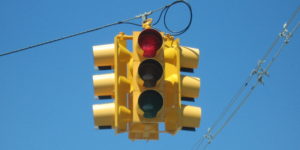
by Dave Bullock, Managing Director of ITS for Miovision
View the entire newsletter for more articles: 2016 – NJAC County Biz – September
At their most basic level, traffic signals are infrastructure assets that control vehicular and pedestrian traffic. But what if we could look at the humble traffic signal in a whole new way? What if we looked at this piece of infrastructure as the perfect foundation for a smart city? As the easiest and least expensive way to build a smart city? If you’re a transportation engineer, you have access to one of the most powerful data collection tools in your city.
Traffic signals can do much more than manage traffic flow. They can be the starting point for acquiring massive amounts of data.
#1: It’s Easy and Inexpensive to Integrate Smart Technology
Traffic signals can easily integrate smart technology. The brains that control signals are housed in one location – that traffic cabinet. An Intelligent Transportation Systems (ITS), like Miovision’s Spectrum, can be installed in the traffic cabinet to acquire and communicate data from each traffic device back to the Traffic Management Center (TMC). Gone are the days of needing to rip out and replace legacy traffic infrastructure or lay expensive fiber optic cables just to gain connectivity. Traffic signal data can be connected to cellular LTE communications in 20 minutes or less.
It’s not just the ease of connectivity that’s helpful. Traffic lights are elevated and provide a great view of intersections. Attaching video cameras and sensors to the light or to traffic poles allow for optimal data collection. The location and simplicity of connection make traffic signals an ideal, inexpensive and simple foundation for data collection.
#2: They’re Everywhere
There are more than 340,000 traffic signals in the North America alone. That’s about one traffic signal per 1,000 people. Because they are so ubiquitous, they provide a large number of data collection points. A city of one million people houses thousands of intersections capable of collecting millions of data points each year. Smart cities start with big data, and traffic lights deliver.
#3: Intersections Collect a Lot of Data
Intersections collect a myriad of data points, including vehicle, bike and pedestrian counts, traffic speed, intersection approach volume, congestion reports, accident surveillance, WiFi or Bluetooth MAC address identification, public transportation monitoring, and traffic signal timing to name but a few. Pooling this data in one accessible location opens the doors for unlimited analysis, evaluation, and optimization. More data provides more insights, and more opportunity to build a smarter city.
#4: Generates Immediate Impact
Integrating smart technologies into traffic signals opens the door to immediate impact. Signal timing alone can pay back at a ratio of 40:1. The ripple effect of better signal timing is significant: diminished traffic congestion, lower fuel costs, improved air quality, increased productivity and citizen satisfaction. In the longer run, traffic agency maintenance and labor costs shrink. Intersections are a perfect spot to generate returns.
Large and expensive smart city projects can be hard to justify. But integrating simple and inexpensive smart technologies at traffic intersections will show an immediate ROI. The resulting savings are available to forge ahead with a bigger smart city vision.
#5: More than Traffic
Smarter traffic signals don’t just optimize traffic. Connectivity provides the opportunity to integrate with other data points. Signals can connect to vehicles through Vehicle to Vehicle (V2V) communications. In the future, smart signals and sensors will deliver data like weather, crash reports and road conditions. Think of your city as a network of arteries providing check-in points to help you navigate the city most efficiently. Once ‘smart’ traffic signals have been deployed, data integration points are only limited by the imagination.
